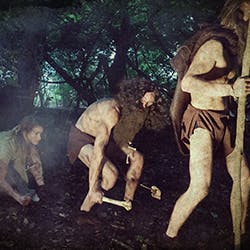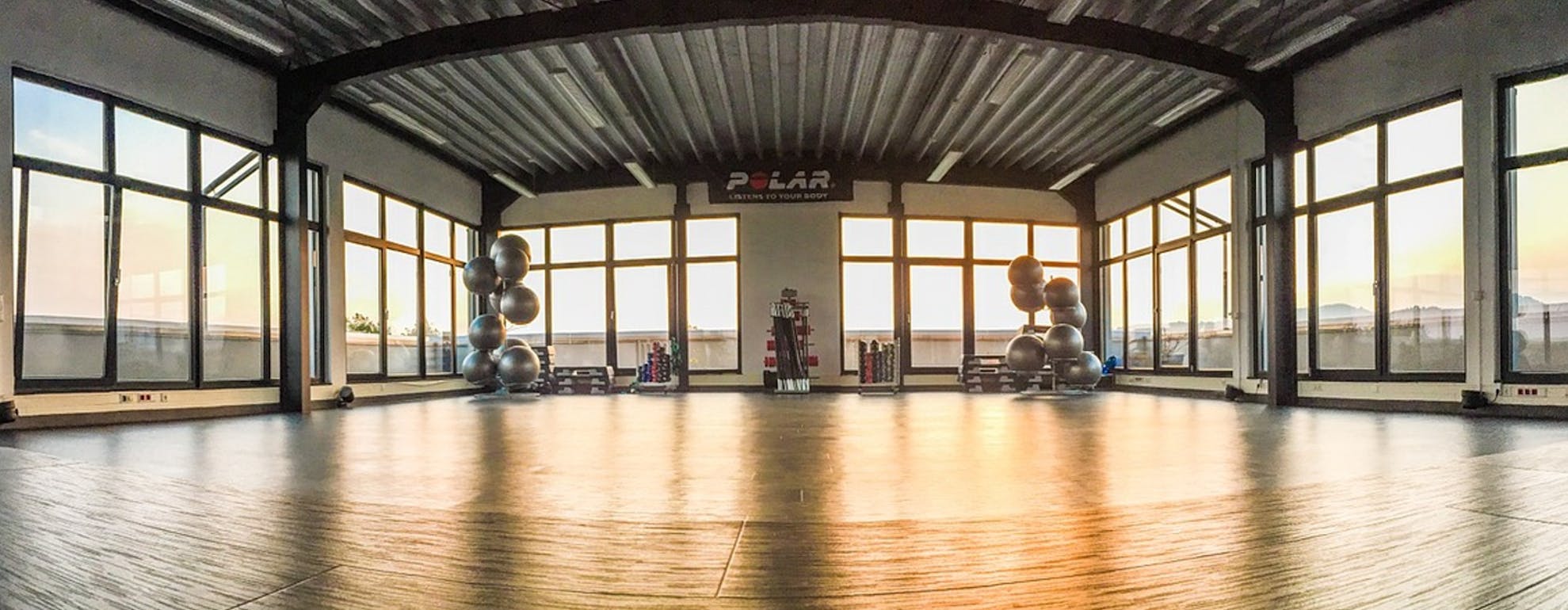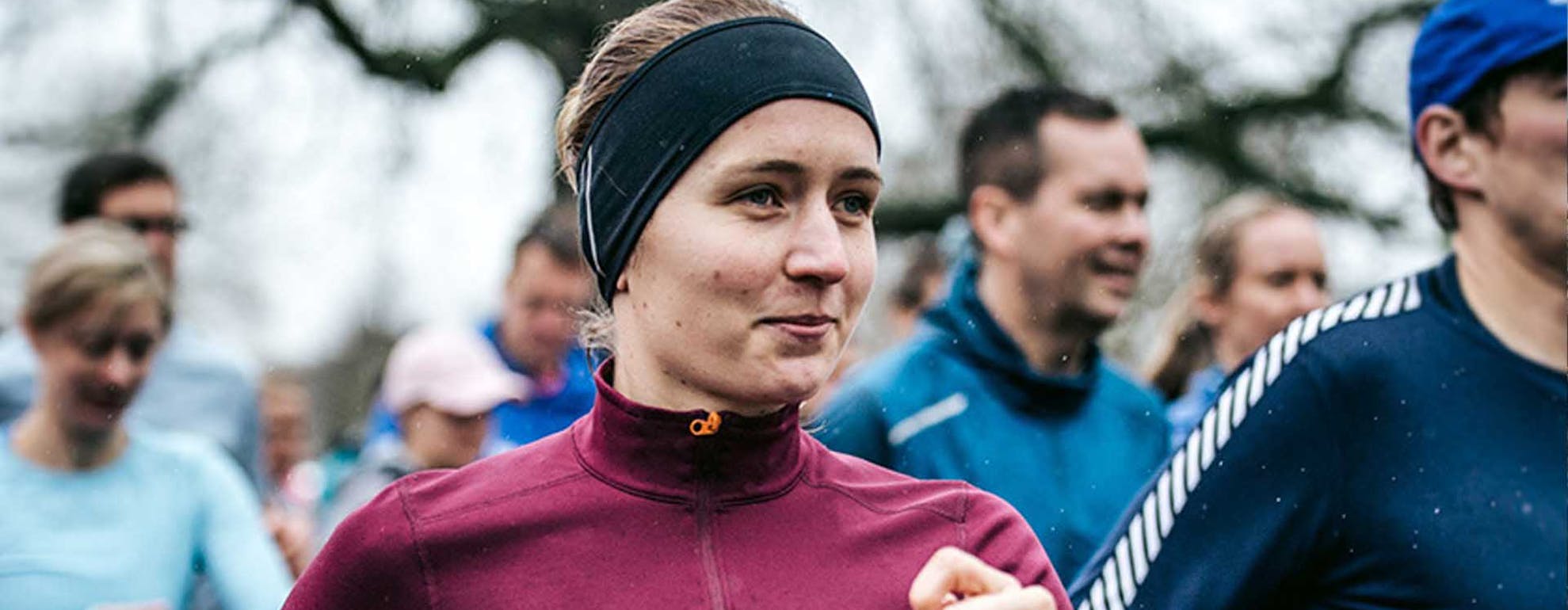
How Fit were Cavemen?
If you were transported 200,000 years back in time to the Stone Age, would you be lunch, or would you make the cut and be Stone Hench?
We asked this question to the British public, and our findings weren’t exactly the most promising. Showing that while we have evolved when it comes to knowledge and technology, we seem to have devolved where physical fitness is concerned. With a staggering 90% of us unable to do the physical tasks that cavemen had to do every day.
Working with Erwan Le Corre, a natural movement expert, we learnt the kind of gruelling activities our ancestors did every day just to survive. We translated the kinds of movements and tasks prehistoric people did, from climbing and crouching to running and carrying, to create a number of prehistoric fitness benchmarks.
From climbing trees to gain better observation to carrying your tribe’s meal for the evening, you can find out how fit cavemen had to be below… and also how well we as a nation fared against each of these benchmarks!
ㅤ
GROUND MOVEMENT:
To be able to hold a deep squat for 30 minutes
To get up from a seated position without using hands, and to not loose balance. Sit back down with losing balance and not using your hands.
Why: “Our ancestors would have to squat a lot in their day to day lives. From tending to a fire and cooking food, to simply waiting in position ready to run – for prey or from a predator.
In addition to this, hunters would have to easily get up and down from a seated position when aiming for a target with a bow, and mothers could be holding their child when they have to quickly get up to run from danger”.
How modern man fared in 2017: Hardly any of the British population can contend with a caveman and squat for 30 minutes, with 99% stating they would fail the task! The majority (35%) feeling they could only muster 1-5 minutes.
While just a quarter (26%) of us can get up and back down from a seated position without using our hands. Showing us that our balance needs some work, but our squatting strength needs a whole lot more!
ㅤ

ㅤ
RUNNING BENCHMARKS:
Be able to walk for 20 miles at a steady pace without a break
To sprint for 180 metres/200 yards in less than 30 seconds
Be able to run 10 miles in no more than 80 minutes
Why: “The hunt could take you far away from your tribe, and with a hungry group behind you, walking far and wide to find food and then bring it back quickly would have been essential”.
How modern man fared in 2017: Only 5% of Brits could run 10 miles in 80 minutes, with even fewer (2.5%) stating that they could walk for 20 miles non-stop like our ancestors could and would have to!
Finally, when it came to running and walking like a caveman, just 1 in 10 of us would be able to challenge our ancestors and sprint 180 metres in under 30 seconds. Speed and endurance something modern man definitely needs to look at!
A great reason to get started with our guides that can be found here.
ㅤ
JUMPING:
To be able to jump the same distance as your height from a standing position
Why: “Jumping would only be used when necessary by our ancestors, however it would have been essential at times to cross gaps such as a river or jump over obstacles whilst running. Sometimes, a run up wouldn’t have been possible, so cavemen needed to be sure they could make the distance”.
How modern man fared in 2017: Modern men can’t jump. A shocking 93% of Brits can’t jump the distance of their own height, falling further behind our predecessors when it comes to physical fitness.
ㅤ
CLIMBING:
To hang from your hands from a bar raised horizontally above your head
To then be able to pull yourself up and climb on top of the bar
Why: “Climbing was an essential skill that had to be versatile. It wasn’t just a case of climbing a certain object each time. This could have varied from needing to climb a thin, tall tree for either food or observation, or climbing rocks to gain shelter or other resources”.
How modern man fared in 2017: Just over a quarter of modern Brits (26%) stated they could hang from their hands, while a much lower 10% would be able to pull themselves up!
ㅤ

ㅤ
LIFTING AND CARRYING:
To lift an object half your body weight and carry it for a whole mile on uneven terrain
To carry a person your own weight for half a mile with no pauses
Why: “There is a big difference in how lifting is viewed today in comparison to the era of our hunter gatherer ancestors. Lifting for cavemen was out of necessity, so the process of lifting something overhead to then put it back down would have seemed pointless to them! Instead, being able to lift irregular loads, such as an injured person, rocks, logs or animals was crucial, as well as being able to carry them over long distances and uneven terrain. While cavemen didn’t have the strength of an Olympic weightlifter, as they could lift larger loads comparatively, cavemen had greater overall strength and endurance because of their lifestyle”.
How modern man fared in 2017: Only 6% of the population could carry a person their own weight for half a mile, while a whopping 90% of Brits would also fail at carrying an object half their weight for a full mile.
There’s a lot more work to be done here if we’re ever going to be Stone Hench!
ㅤ

ㅤ
THROWING AND CATCHING:
To be able to hit a small target with a tennis ball from 15 metres away
To be able to catch a ball thrown to you from 20 metres away, five times in a row
Why: “Throwing and catching was usually reserved for smaller, lighter objects – so this isn’t a matter of strength but instead accuracy. Throwing would be used in hunting with spears or stones and a good catch would be needed when objects were quickly needed to be passed between the group.
Accurate throwing was key to the survival of our ancestors!”
How modern man fared in 2017: While we definitely couldn’t keep up with cavemen, we are marginally better at catching than we’ve shown at running or lifting, with one in five (20%) being able to catch a ball thrown from 20 metres five times in a row, and slightly less (13%) able to hit a small target by throwing a ball from 15 metres away.
Taking our screen-led lives into account, has modern man even lost the fundamentals of hand-eye co-ordination?
ㅤ
SWIMMING:
Stay afloat without any assistance and swim comfortably for more than 10 metres
Why: “For most modern humans, this is actually a test we’ll be able to pass! For many of our ancestors, swimming wasn’t necessary to their survival so they had no need to learn how to do it. For others that lived close to larger bodies of water, they simply needed to stay afloat and swim well enough to reach the shore as they would avoid water in harsher conditions”.
How modern man fared in 2017: To end on more of a high, and somewhat unsurprisingly, a solid 39% of us can keep up with our ancestors when it comes to swimming. But it is still less than half!
So we’ve almost got the swimming sorted… now just for everything else.
ㅤ

ㅤ
HOW TO TURN IT AROUND?
Feel like you have a lot in common with most of the Brits in our survey?
Well it’s never too late, and when it comes to putting together a fitness plan, it isn’t just about getting in the gym and forgetting about everything else at your disposal. Erwan Le Corre puts our inability to compete with cavemen down not just to the modern desk dwelling lifestyle, but also ‘isolated’ and ‘compartmentalised’ gym workouts. Stating that “If we were to explain to our ancestors what humans now do in a modern gym and why? They would laugh and want out right away”.
“Machine based workouts force the body to work in isolation, when it isn’t meant to work like this, but instead as a unit. Machines at the gym can dictate and shrink movement patterns, and do not let the body move freely in the way it is supposed to.”
Pairing the gym with more ‘natural movement’ is the way to gain true, natural fitness. So if you’re interested in upping your workouts and learning more, click on more of our articles that go into detail on natural movement itself, and some guides for various types of exercises.
ㅤ
Erwan Le Corre is the founder of physical fitness system MovNat. For serious, methodical and scientific instruction on evolution-based natural Movement visit movnat.com
Looking for some training tips and advice? Then head over to our Training category where our athletes and experts explain everything you need to know.
Welcome
Welcome to the SportsShoes Training Hub! We’ve teamed up with athletes and experts to bring you the very best advice on how to maximise your workouts and achieve your best results.
Read More
Share this
Featured Articles
View All



